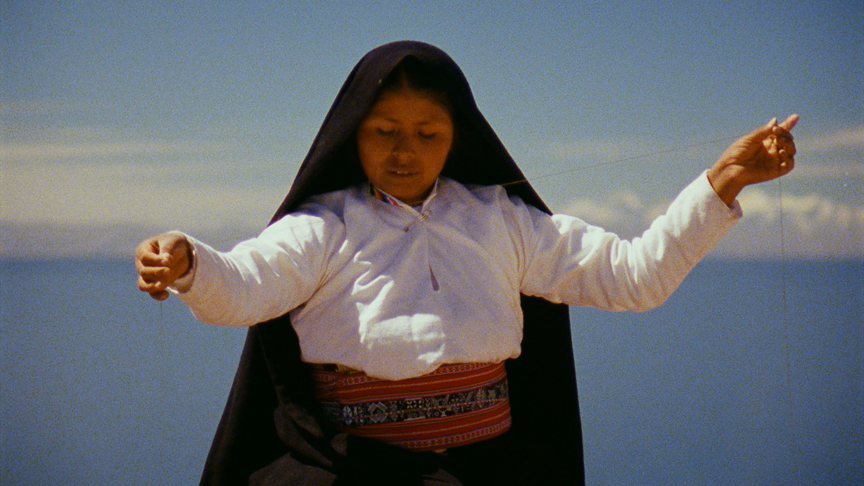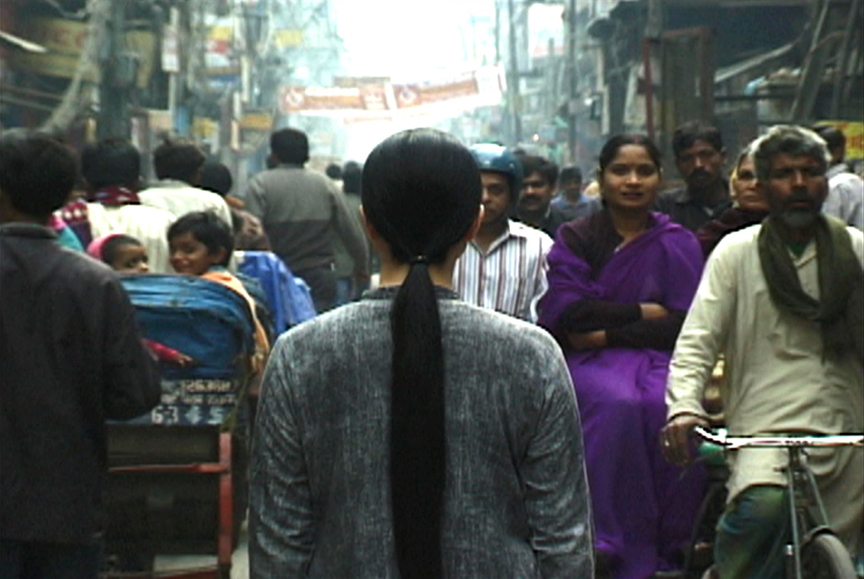Shows
Kimsooja’s “Unfolding”


Embodiment is more than a research topic for South Korean-born artist Kimsooja. It is a way of life, enveloping everything from her name—technically (and colloquially) Kim Sooja, but the space between first and last name has been dropped in order to skirt assumptions on gender and cultural identity—to the way she carries herself and communicates. Such affections don’t come across as gimmick or performance, but rather, they convey a sincere and all encompassing concern for the concepts she explores. Despite having few allegiances to recent movements in contemporary art, Kimsooja’s work manages to sit comfortably within its aesthetic standards and mores.
“Kimsooja: Unfolding,” at the Vancouver Art Gallery (VAG), spans the artist's thirty-plus-year career with excerpts from some of her most recognizable projects (which include video, performance, sculpture and installation) displayed in loosely chronological order. Kimsooja initially gained recognition for her sewn works, such as The Heaven and the Earth (1984), their reliance on the two-dimensional picture plane and use of material, color and abstraction, recalling modernist painting. Yet upon closer examination, it is clear that such works avoid modernism's stoic logic, containing instead an overt spirituality and sentimentality. Like much of Kimsooja's oeuvre, these works, with their use of well-worn and dyed textiles, maintain a distinct link to the human body, each piece of textile possessing a personal history.

If you’ve chosen the curatorially prescribed path, in the next room you'll find the artist's “Deductive Objects” (1990-97). In these ready-made pieces, aged American and Korean agrarian tools are wrapped in traditional Korean textile, continuing the artist's sustained interest in the culture clash between East and West. Simple gestures of wrapping, folding and handling fabric express a belief that art making and everyday actions are inextricably linked. Many of the objects are completely concealed by a skin of fabric, yet their form remains intact. The single hand-saw left mostly exposed, however, stands conceptually stronger than the rest of the objects. Its sharp blade has been wrapped at two-inch intervals, a modest gesture that demonstrates a fragile balance between soft and sharp, which might allude to the tension between labor and art. In addition, the piece conveys the artist’s empathy not just for the object but for its user.

Possibly the Kimsooja's best known work, A Needle Woman (2005), is a multichannel video work composed of eight projections that encircle viewers entering the large space. The artist is filmed from behind, tranquil in the midst of chaos, a plait of her black hair hanging straight between her shoulder blades. Hoards of people in some of the world's busiest metropolises—from London to Lagos—bustle about her, like crashing waves or a flowing stream. At times pedestrians pass her, either ignoring her or oblivious to her presence as they go about their daily routine, while others stop and gawk. Perhaps A Needle Woman reflects the artist's ambivalence about, or resistance to, a certain notion of progress.
In the days leading up to the opening of her retrospective at the VAG, Kimsooja’s signature low slung ponytail swayed casually through local gallery openings and artist talks. As in A Needle Woman, the artist stood out while blending in. During a tour of her exhibition, she spoke softly about spirituality, ritual, family and culture, and art’s role within these societal tenets. Listening to her, it’s clear her practice is a logical extension of her worldview, one that remains critical of things moving too fast.
Kimsooja: Unfolding is on view at the Vancouver Art Gallery as part of the Capture Photography Festival through January 26.
Meredith Carr is a writer based in Vancouver.







